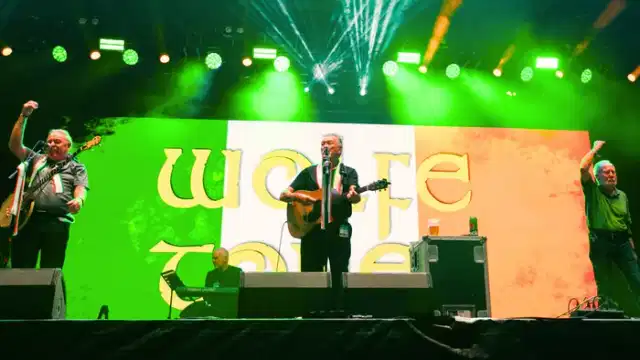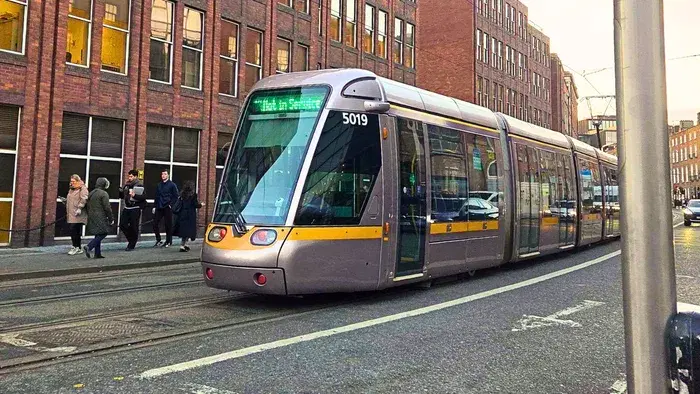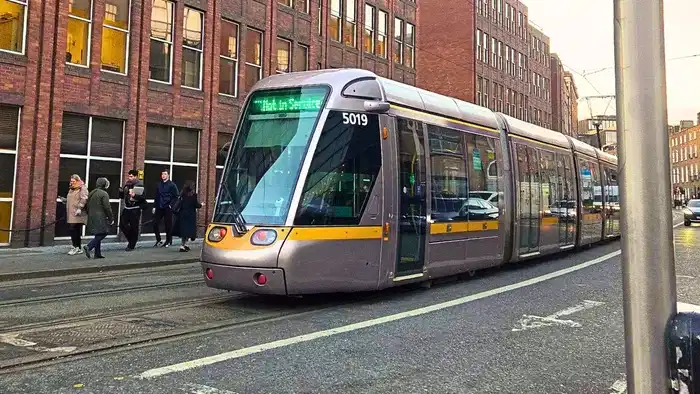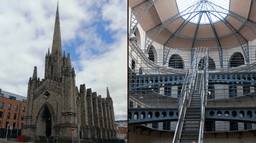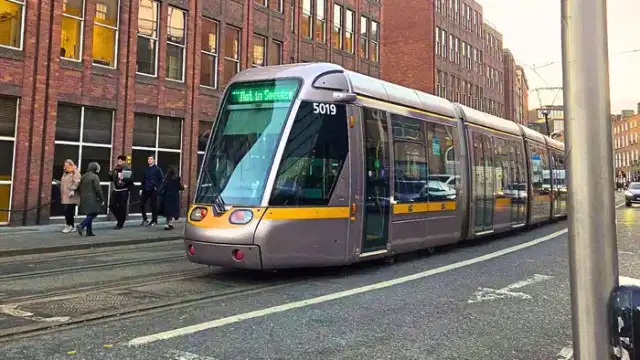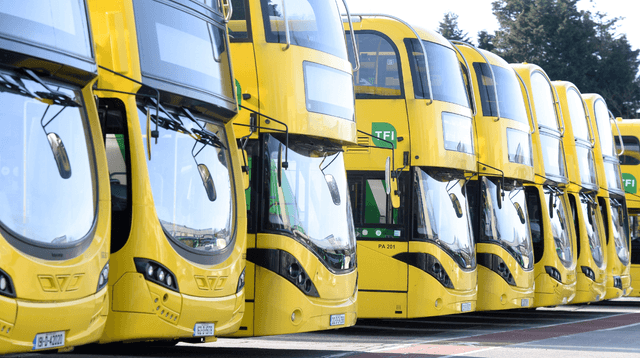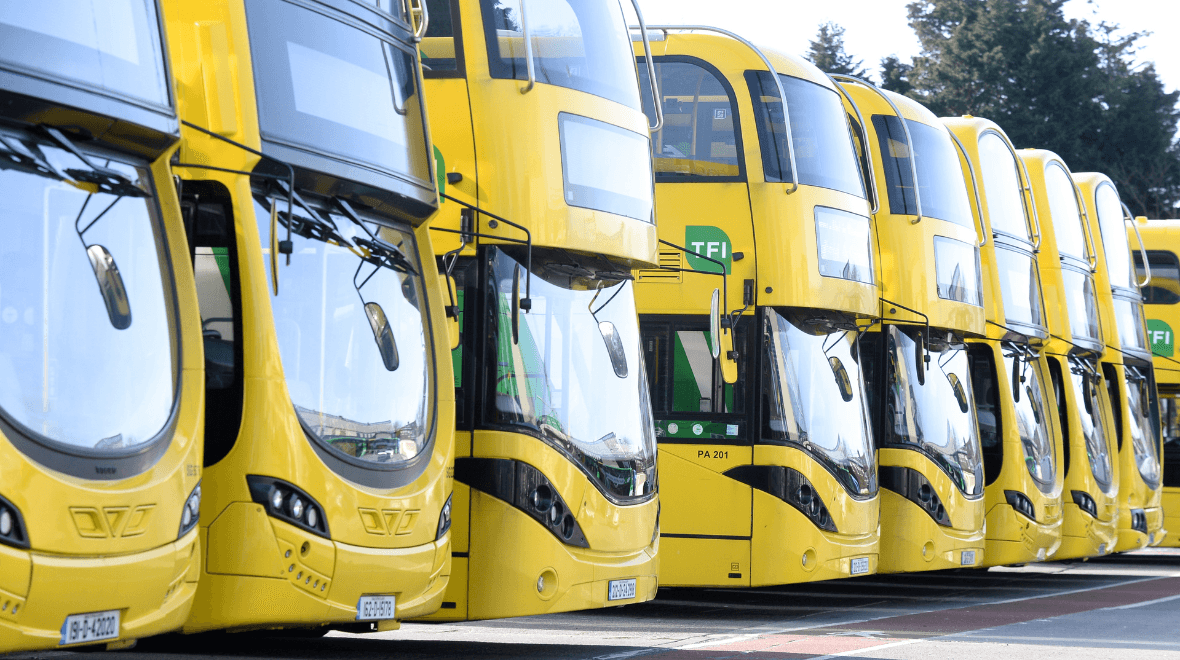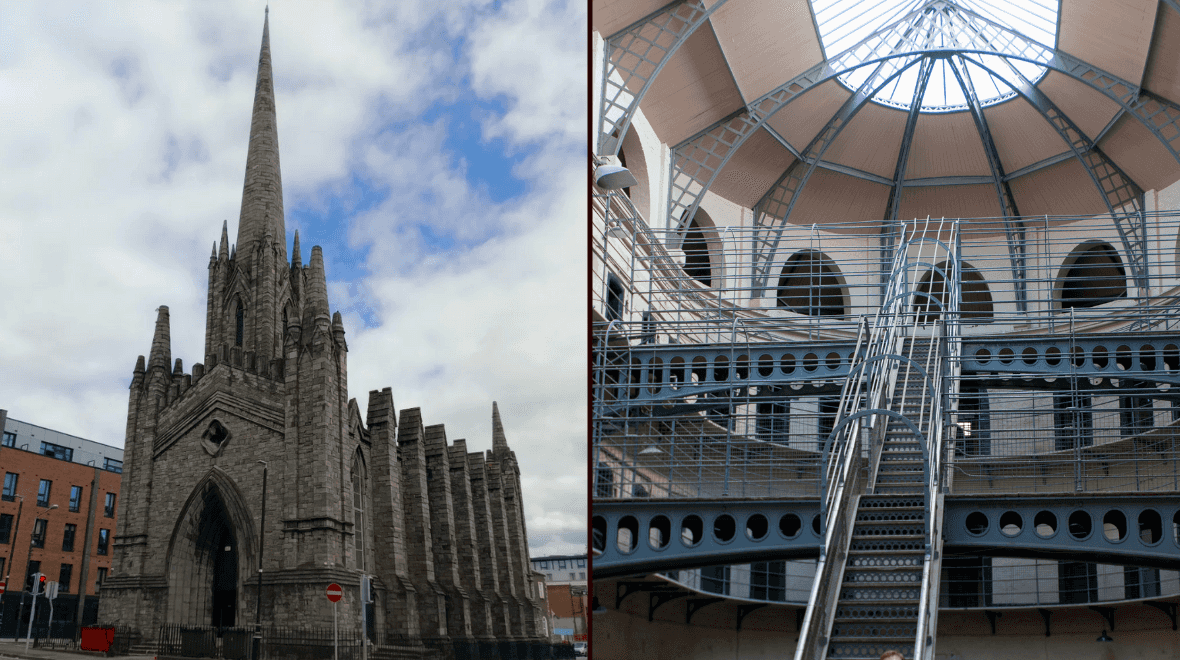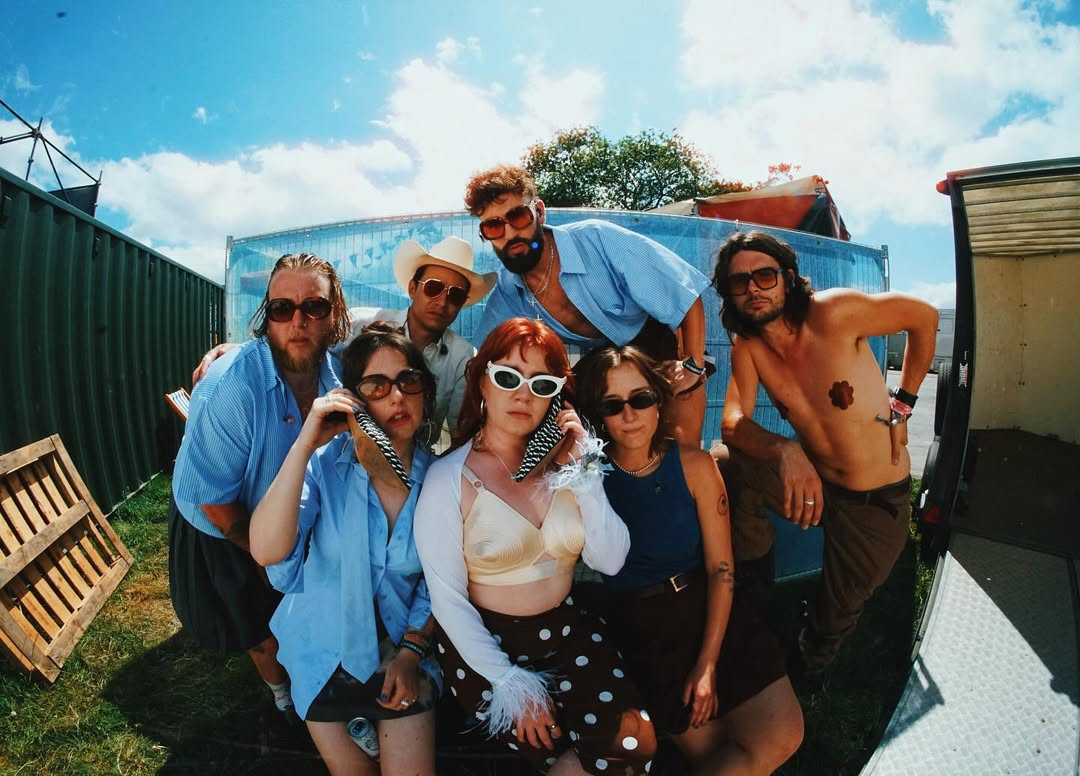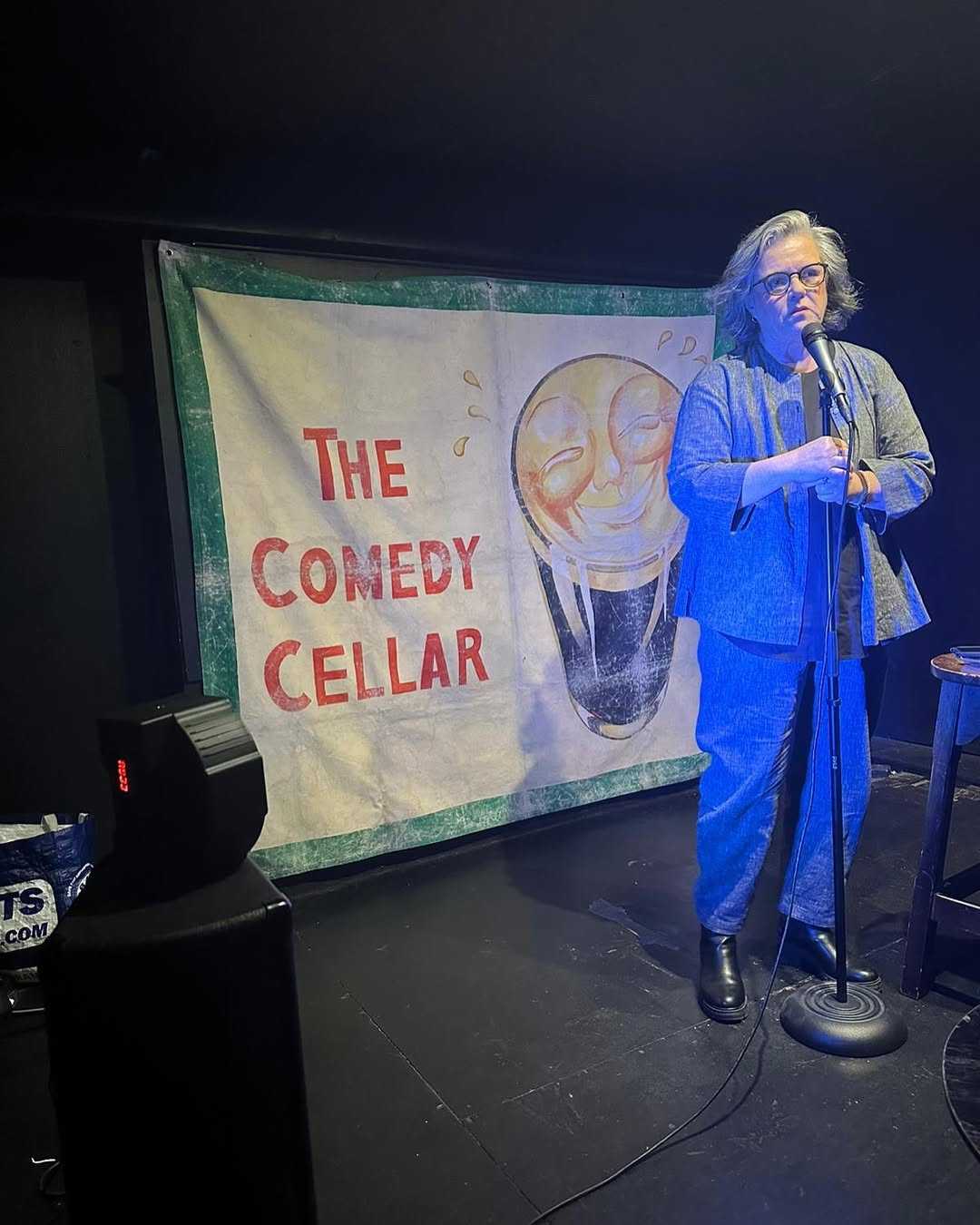"It appears substantial but is innately hollow within. It represents nothing and commemorates nothing but itself."
Of all the monuments dotted around Dublin, The Spire elicits the most divisive of reactions, attitudes and
nicknames. Over on our social channels, we posted a
fantastic aerial video of the tip of the spire as dusk approaches, and one look at the comments shows up a lot of wide diversity of opinions people in the city hold about it. The criticism about the monument is as varied as the Spire is tall, comments about the "price of it" predominate alongside questions about its purpose "still don't know what it does" are peppered in between comments like "eye sore" and "so ugly". While it's been a fixture of the Dublin skyline for nearly 20 years, opinions on it haven't softened in that time. Here are a couple of things about the Spire that might have peed people off:
Site
Set in the middle of O'Connell Street, between North Earl Street and Henry Street, standing at 120m high it towers over the GPO and dominates the street which was once one of Dublin's busiest thoroughfares. For some, the shape of the monument has lent it the nickname 'Syringe in the dinge', and a visual reminder of the drug issues that can be particularly apparent on the street where the Spire sits.
It feels to be the pinpoint of many of the frustrations Dubliners feel about O'Connell Street, once a busy shopping destination, now a shadow of its former glory, with many of the major department stores/shops closing down or moving, leaving an empty, eery feeling behind.
Historical significance
The Spire was intended as a permanent monument to replace Nelson's Pillar destroyed by the IRA in 1966. The site remained vacant for several years before the Anna Livia monument was installed during the 1988 Dublin Millennium celebrations. The 'floozy in the jacuzzis' ' time was up in the prime thoroughfare though, and she moved down the Liffey to Croppies Memorial Park where she stays to this day.
While attitudes towards the current site of the Spire might have changed over the last few years, it still remains a significant street in the city. The Spire sits in the same street as statues dedicated to legendary Irish political figures like 'Big' Jim Larkin, Charles Stewart Parnell and Daniel O'Connell. Many argued at the time that the site should have been used as an opportunity to highlight a contemporary leader. But opting for a hyper-modern monument does negate any political implications that could have been associated with the chosen sculpture. The timing of the erection should not be disregarded, Ireland was looking towards a brand-new millennium, filled with promise for the future and the potential of technological advancement, which for some the Spire represented.
Cost
Due to be completed in 2000 to celebrate Ireland entering into the third millennium, due to a series of delays The Spire was actually completed in January 2003. A series of legal challenges with knock-on delays no doubt added to the price tag, which ended up as €4.6m. One of the main points of contention placed on the monument is that the stainless sculpture cost so much. The time frame of its erection is not to be overlooked, in the height of the Celtic Tiger, for some the sculpture has come to represent the excesses of contemporary Ireland, appearing shiny on the surface but tarnished on closer inspection, as a Reddit user
phrased it "It appears substantial but is innately hollow within. It represents nothing and commemorates nothing but itself."
Design
Before the Spire came to be, the design was put out to tender and the design was ultimately chosen out of 205 entrants. Controversially, the design chosen was not an Irish one, but instead a British-based Ian Ritchie Architects design. Choosing a British design for the site which once commemorated Horatio Nelson's victory over the Franco-Spanish fleet at Trafalgar, a visual representation of British rule in Ireland, was a controversial one, to say the least. The selection planning decision was later challenged in the High Court by Mr Micheal Ó Nuallain, a retired school inspector whose own design, one of the original 205 competition entries, had been rejected. Ian Ritchie Architects cited construction delays centring from that "delayed until 2000 because of legal challenges by two other competitors."
https://www.tiktok.com/@lovindublin/video/7215930839140420869
Operational Costs
While the popularity of the sculpture has always been fraught, costs associated with the upkeep of the divisive work did little to turn its favour around.
In 2021, Dublin City Council estimated the aviation light at the top of the Spire may cost €400,000 to fix, despite costing a mere €10,000 to replace in 2015. The once labelled 'self-cleaning' Spire in fact requires scrubbing every 18 months, according to a
Freedom of Information Request obtained in 2017, the cost of cleaning the spire numbered €400,000 over 4 years, in 2013 was €80,552, €84,103 in 2014, €72,980 in 2015 and in 2016 it was €80,414.
Conclusion
There is an unholy amount of attention thrown on this monument and a lot of the criticism is based on legitimate concerns. Personally, I think it's what the Spire represents that rubs Dubliners up the wrong way, and the symbolism behind it. We were sold the idea of an awe-inspiring futuristic beacon, dazzling the heart of the city with modernity, illuminating the future ahead, unfortunately, the future that it promised didn't happen. It's a visible reminder of the feckless aspirations of Ireland in the midst of its Celtic Tiger economic boom, which places our modern-day crisis and epidemics into stark relief. It's no eyesore, but what it represents can be hard to look at.
Header image: (c) Barry Mason via ritchie.studio
READ ON: Temporary lift to be installed at Dún Laoghaire Baths until it can be made more accessible